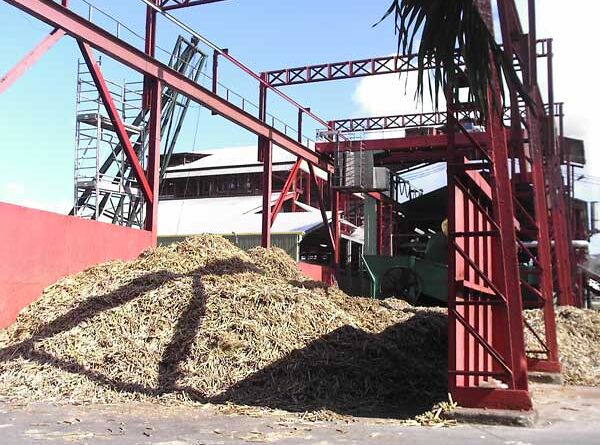The tastes and aromas of Martinique rums
The oldest authors who described the first cane spirits (like Du Tertre) have always underlined the marginal presence, together with the molasses tafia, of a “resident” rum, produced from the only cane juice after crushing, praising its exceptional taste compared to the first. This quality has earned the “inhabitant” rum, today called “agricultural” rum, to survive despite the sugar crises and to assert itself in 1996 by obtaining the A.O.C. This award attaches to the terroir product, encompassing various elements, more or less interdependent, acting on the final product. Their aromatic contribution is made from the raw material to its transformation.
To date, the specific aromatic molecule of cane has not been discovered. However, its main aromas are close to fresh juice, with characteristic floral (cane, honey, orange blossom …) and vegetable notes. Shades exist depending on the variety and the growing environment of the plant.
If some people want to attach themselves to the cane variety, its genome gives it an expression of great variability. The same variety of cane planted a few kilometers away can give a different product. Rods are also more or less adapted to the soils of Martinique. Thus, by the pluviometry, the north will have different varieties from the south and from the center and, even inside these zones, cane basins appear according to local specificities, notably in relief. The rhumeries seek above all rich and quality canes. Using it in the nearest pools, this already gives the production of each a certain differentiation.
The climate can vary and if the cane requires a certain amount of water for its growth, a water stress is necessary to reach its maturity. Also, during a very dry campaign, the aromas of ripe canes will be associated with a little dry plant (tea / herbal tea) and tropical fruit in jam. On the contrary, in a wet year, the cane is still sufficiently green, with a more accentuated plant component (hay, …) and notes of fresh fruit, especially lime bark. Like wine, there is a share of “vintage” in agricultural rums, which cannot be claimed by molasses rum annihilated by the cooking of the juice.
Obtaining cane juice is only the first step. Then comes the fermentation which can consume part of the aromas present, but also develop others, from “precursors” or by syntheses specific to yeast. It is still necessary to keep the desired aromas during the distillation.
Fermentation
This step is essential in the development of agricultural rum, its control will depend on the composition of the final product. To avoid any risk of sanitary drift, especially bacterial, yeasts are added to the fresh juice. However, there may remain a more or less significant part of external germs coming from the fields (lactobacilli …). By varying the duration, the temperature, the density of the must (therefore the degree of alcohol), the choice of sourdough, its relative quantity and its mode of supply, the growths of the various microorganisms will be modulated. Their specific syntheses, under the conditions laid down, will give the desired final composition of the wine.
From current experience, it appears that an advanced state of health leads to aromas of more amylic fruit (banana, …), accompanied by notes linked to yeasts (gingerbread, brioche …) while less draconian fermentations give slightly more oxidized notes (pear, ti-baum …) and vegetable notes (C6 alcohols, called “heavy”) raising the character of cane.
Distillation
It is commonly accepted that distillation would make the bulk of rum while its aromatic participation remains low, apart from some esterifications by copper and the heating time (beneficial to evaporation, but controlled to avoid burnt tastes). The crucial role of distillation is in the separation of alcohol and aromas from wine.
These are more or less volatile, also depending on the mounting of the columns, the heating time and the degree of pouring (optimal between 65 and 75% vol.), Only a certain fraction of the fragrances of the wine will be extracted (from cane and fermentation). Thus, a too high degree of pouring will eliminate many compounds (the product obtained will be more neutral, tequila style) while providing acidity. Conversely, at too low a degree of flow, more rustic, greener (herbaceous) aromas will be present …
Pouring rum is a fresh rum which is often quite rough and unsuitable for immediate consumption, in particular by the presence of aldehydes. These react with the acids and ethanol present to give beneficial aromatic molecules. This is why the fresh bunch is left to rest for a few weeks and stirred to promote these slow reactions. Pouring rum is the common core in the development of three categories of rum recognized by the A.O.C. Martinique: white rum, high-growth rum and old rum.
Martinique White Agricultural Rum
The White Agricultural Rum, suitable for consumption, is obtained by controlled reduction with neutral water. True image of the stages of manufacture, it will carry floral, fruity and vegetable aromas specific to the conditions of its development.
The High Rum-Sous-Bois Agrico ‘Martinique
Often known by brands chosen from the range of colors it can take, this type of rum (formerly called “dark rum”) is put in oak for at least twelve months. Traditionally, it is raised in large casks. Inside the latter, by the small contact surface and the short time spent, it gains aromas of wood while retaining those of its raw material. Thus, depending on the time and the degree of preparation, the floral notes will be more or less present to transform over time into aromas of yellow flowers, then gingerbread, honey, just as the fruity will evolve towards jams, then dried fruit. The characters of the cane are always present while at the same time the aromas of vanilla appear, then the wood.
The choice of aging in small barrels and for several years (more than three years), leads to the disappearance of cane aromas to reveal, with age, depending on the method and technique of aging, very specific aromas, in particular by maceration and microoxygenation (passage of oxygen through the wood).
The fruity notes will evolve from dried fruits to brandy fruits, the spices will pass from vanilla to nutmeg via cinnamon, and the wood will develop, accompanied by, among other things, roasting notes ( related to the burning of barrels) like coffee or cocoa. These aromatic evolutions are the markers of aging which are associated with categories such as simple old rum (3-4 years), “Hors aged” (4-6 years), “Vintage” (same harvest year and more than 6 years),… Martinican agricultural rum, by its aromatic specificity, is unique in its kind. This result is the result of its elaboration with meticulous care to avoid any alteration.
Such know-how is specific to each distillery and is expressed in the continuity of ancestral practices modulated, developed or amended by experience and the evolution of knowledge to keep the soul of this product, its culture, true postcard and ambassador of the island.




